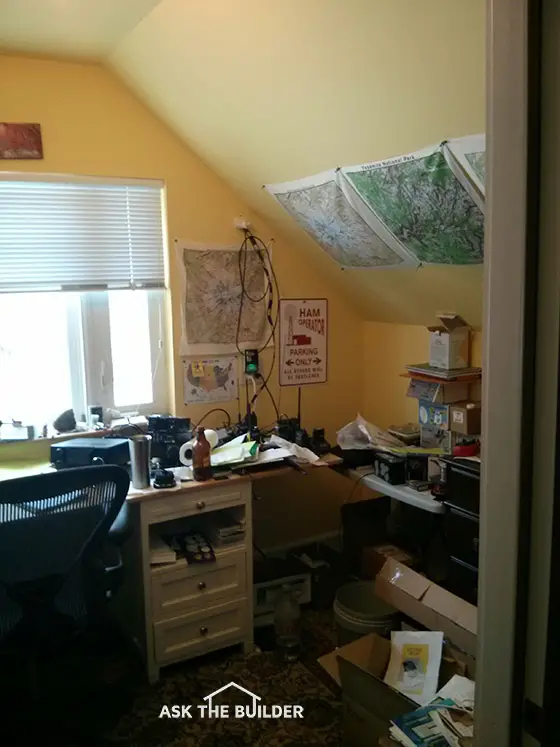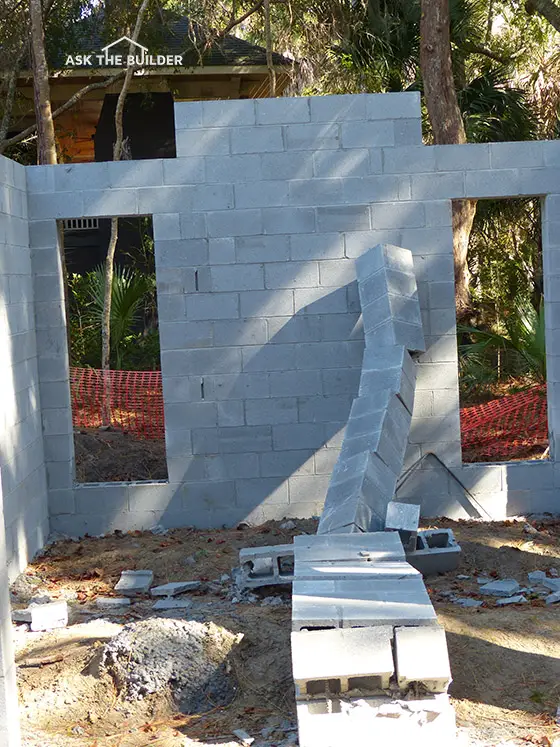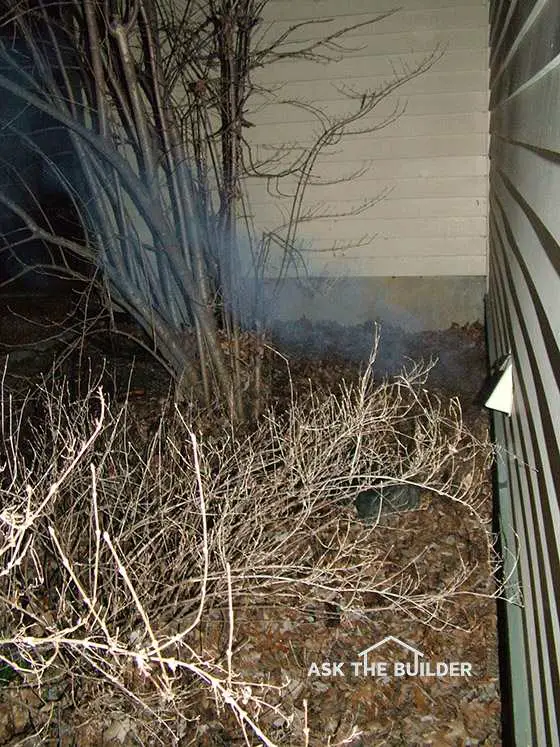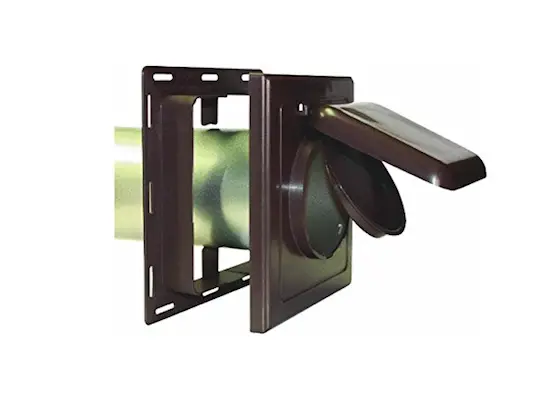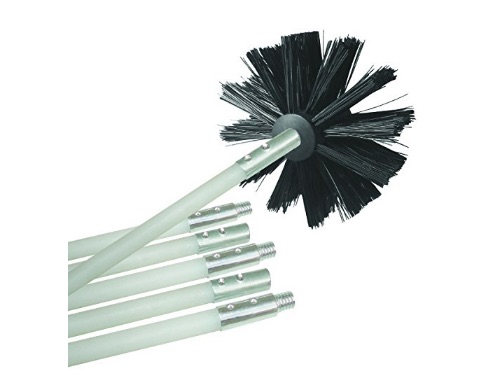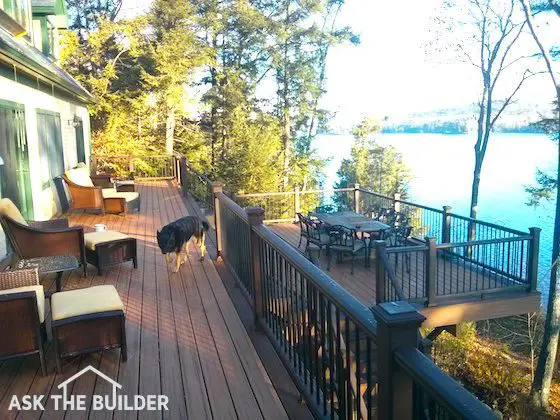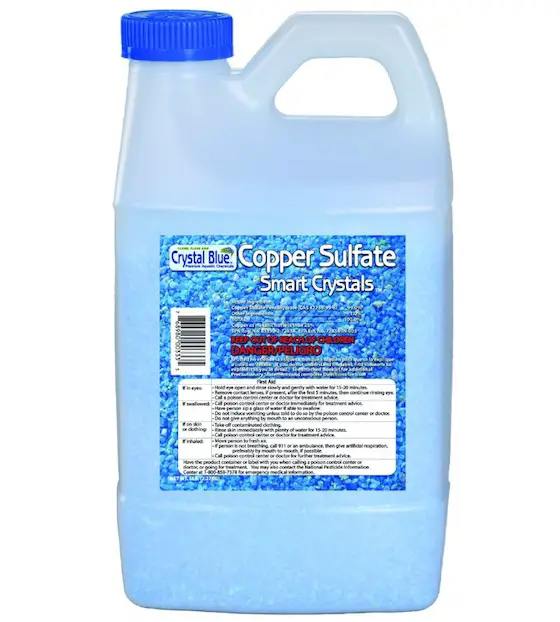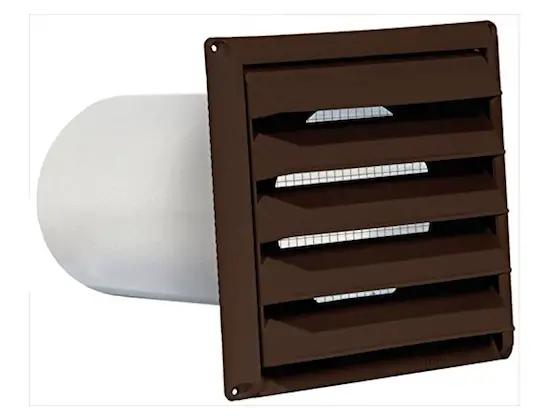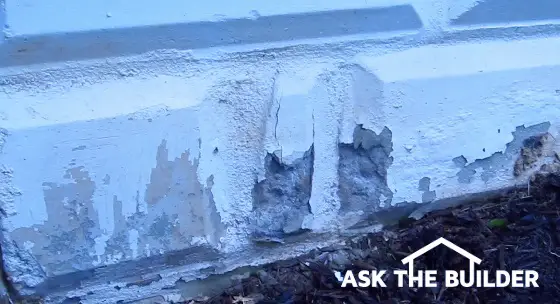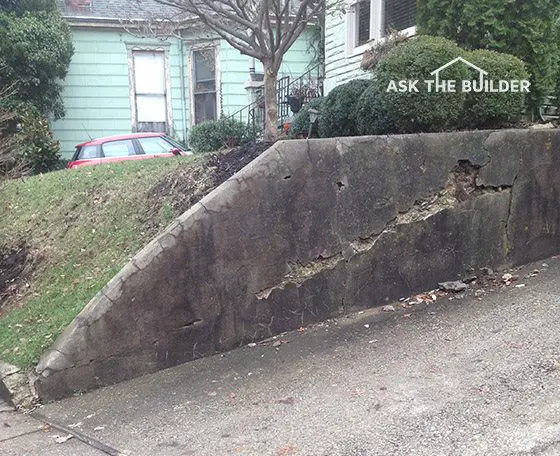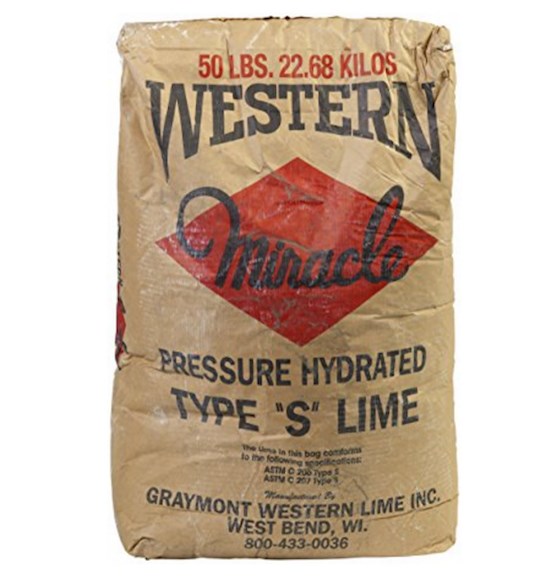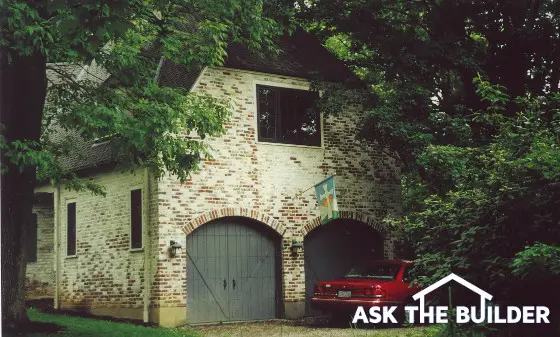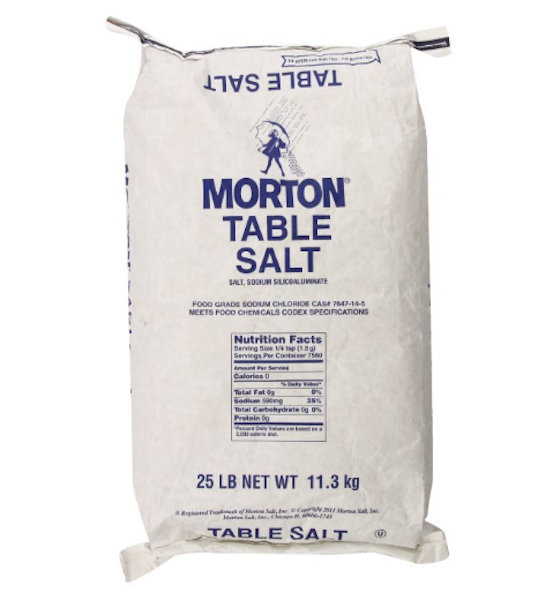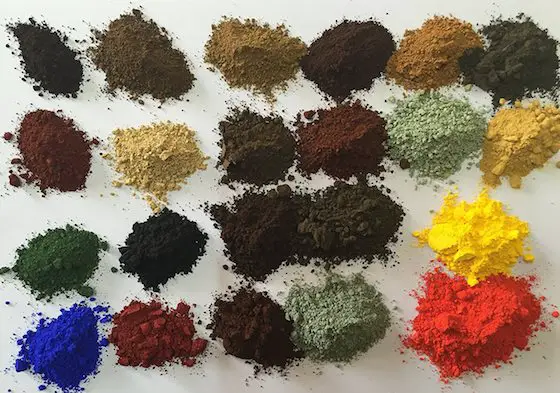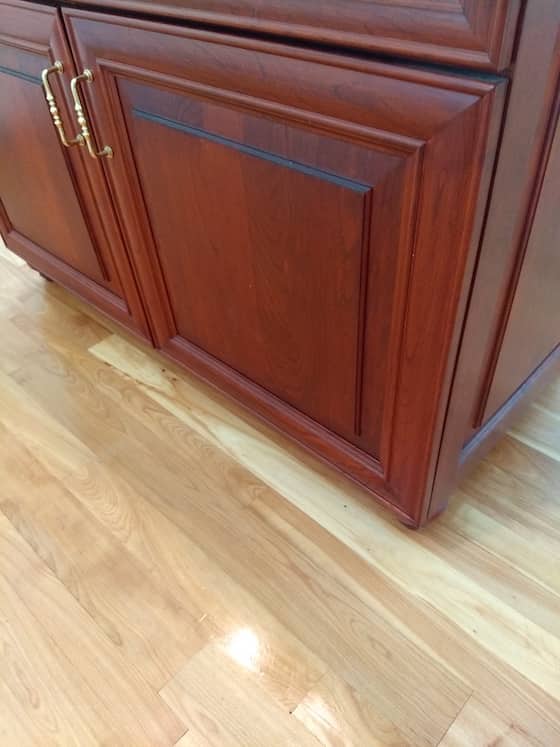
You can remove wood stain from these cabinets or the hardwood floor. It's hard to get out all the stain. Copyright 2018 Tim Carter
"To remove all oil stain from a piece of stained woodwork, you usually have to sand it. Oil stains penetrate into the grain of the wood and some of it just can't be pulled out by a chemical stripper."
Removing Wood Stains Checklist
- Indoor wood - use paint remover plus mineral spirits
- Outdoor wood - use Stain Solver oxygen bleach
- Mildew and algae most common outdoor stain
- Use Oxalic acid on Redwood and Cedar
- CLICK HERE to Get Tim's FREE & FUNNY Newsletter
Is it Hard to Remove Wood Stain?
It's not too hard to remove wood stain. A good wood stain remover is regular paint stripper.
You may want to return stained wood that's indoors to the wood's natural color. It could be too dark for your tastes.
How Much Stain Will the Stripper Remove?
Paint stripper can remove about fifty percent of the wood stain.

This is a great paint stripper to try first to remove oil wood stain from natural wood. It's pretty much non-toxic. Always TEST it on an out-of-the-way area of the wood to see how it does. CLICK THE IMAGE NOW TO ORDER SOME.
To remove all oil stain from a piece of stained woodwork, you usually have to sand it. Oil stains penetrate into the grain of the wood and some of it just can't be pulled out by a chemical stripper.
CLICK HERE to get FREE & FAST BIDS from local painters who can chemically strip your wood.
Do Mildew & Algae Harm Wood?
Mildew and algae do not hurt wood. They are surface defects and usually feed off the wood finish or food that collects on the wood.
Mildew is a fungus that grows on the surface of wood or wood finishes. It does not hurt the structure of wood, however, its grey and sometimes black appearance is unsightly. High humidity levels promote the growth of mildew.
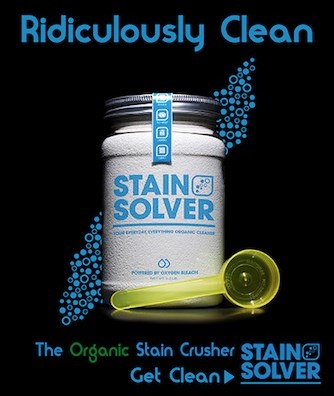
Stain Solver is MADE in the USA with USA ingredients that are food-grade quality. CLICK THE IMAGE to order some NOW.
To test for mildew, simply put a drop of oxygen bleach solution on a suspected spot. Do this in an out of the way location. If it is mildew, the oxygen bleach will begin to create micro bubbles and usually the mildew will disappear in a matter of minutes.
I happen to prefer Stain Solver certified organic oxygen bleach. It's Made in the USA with USA ingredients. You just mix the pure powder with hot tap water, stir a minute or two and you're ready to use it.
Stain Solver has no odor like chlorine bleach. It's non-toxic. Chlorine bleach is highly toxic and will kill all surrounding vegetation, even trees if you expose them long enough to chlorine bleach.
Stain Solver will not remove the natural color of the wood, nor will it damage the lignin that binds the wood fibers together. It's the safest bleach you can use on outdoor wood.
To remove the rest of the mildew, scrub the area with detergent mixed with the oxygen bleach.
Can I Mix Bleach With Ammonia?
IMPORTANT TIP: NEVER mix bleach with ammonia or detergents or soaps that contain ammonia. The combination of bleach and ammonia produces toxic gases which can be FATAL, especially in unventilated areas! After cleaning, rinse the washed area with a solution of bleach and water to kill any remaining mildew spores.
Watch the video below to show you how easy it is to remove stains from outdoor wood using Stain Solver oxygen bleach. Yes, the open of the video is a little corny, but the local ABC-TV affiliate always wanted me to have some fun with my segments that appeared on local TV in Cincinnati, OH.
How Do I Remove the Dark Stains from Cedar?
Use certified organic oxygen bleach to remove dark wood stains from cedar.
If you are a victim of extractive stains, they can be removed. All you need to do is to mix a solution of Stain Solver oxygen bleach. Mix one cup of Stain Solver powder to one gallon of hot tap water.
Use this solution to wash the stained area. Rinse well.
How Do I Remove Dark Redwood Stains?
Use oxalic acid to clean redwood and remove dark wood stains.
Then, find a plastic bucket or pail. Now, mix four ounces of oxalic acid crystals with one gallon of warm water.
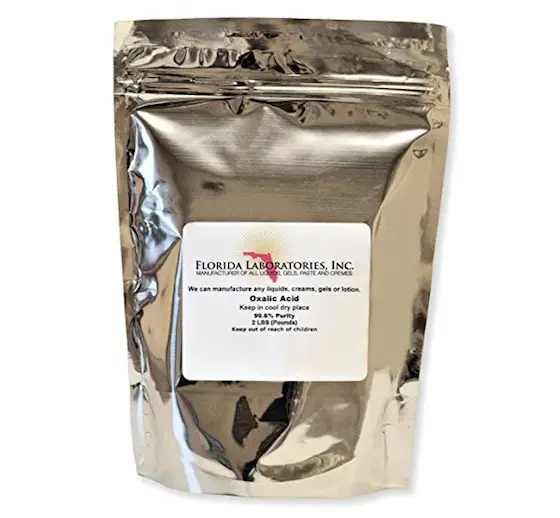
This is a bag of oxalic acid magic crystals. It's great for removing extractive chemical stains, especially on redwood. CLICK THE IMAGE NOW TO ORDER IT.
Note, do NOT use a metal bucket for this solution! The oxalic acid will react with the metal and cause massive problems!!!
Wash the stained area with this solution and simply let it dry. Do not rinse it off until the solution is dry. Any remaining stains should come off when you rinse off the dried oxalic acid. Be sure to use goggles and gloves when using oxalic acid. It can hurt your skin and eyes. It can also hurt plants, so spread some plastic over them.
CLICK HERE to get FREE & FAST BIDS from local deck cleaning companies.
Can Cement & Mortar Stain Redwood?
Yes, cement and mortar can create dark stains on redwood.
The lime which is a part of virtually every concrete and mortar mix can cause stains on redwood which cannot be removed. Redwood which is splattered with these compounds develops black stains which are impossible to remove. Take whatever precautionary measures necessary to prevent splatter.
Column B66
